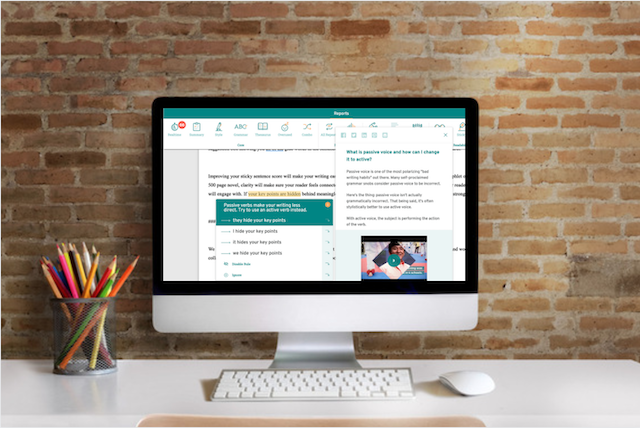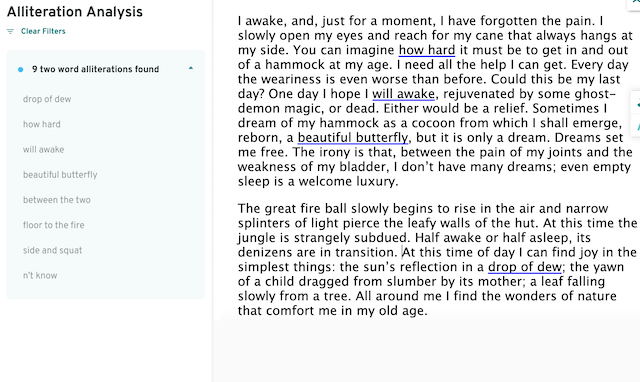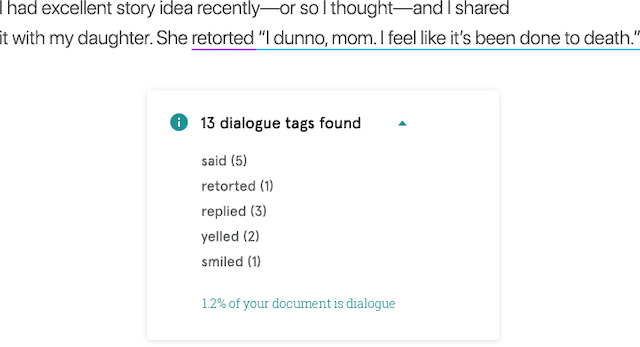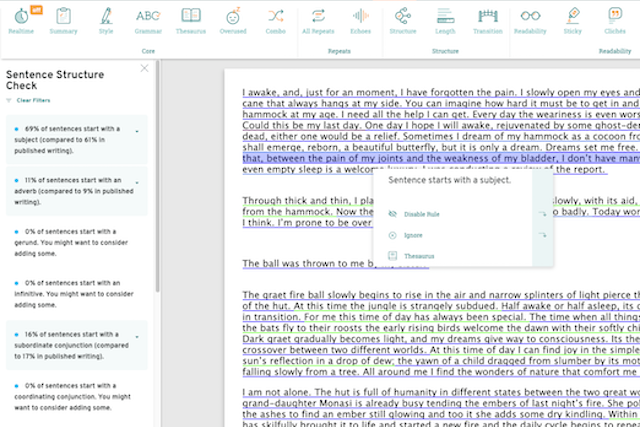
ProWritingAid boasts over twenty reports to improve your writing. That’s a lot! In fact, that can be overwhelming. How do you know where to start?
The ProWritingAid tool is far more than a grammar checker. You might even be familiar with some of our more popular reports, like the Style Report, Sticky Sentences, and Repetitions. But if you really want to harness the power of this all-in-one editing tool, there are probably many reports you’re overlooking.
I’ve highlighted six of my favorite reports below. Keep reading to find out why you should be using them.
1. Clichés
Why do you care if your writing has clichés and idioms? Sometimes, these can be a powerful rhetorical device, but most of the time, we want to avoid them. First of all, clichés are, by definition, overused. Second, idioms, which often become clichés, don’t always translate well. If you have any non-native speakers, using idioms will decrease readability.
Clichés and idioms rarely fit your tone or purpose. They are too informal for formal writing. In fiction, we sometimes use phrases that don’t fit the world we’ve built.

You might not even recognize that some of these phrases are idioms. That’s where the Clichés Report comes in. It analyzes your writing for phrases that aren’t universally easy to understand. You can find this report in the "More Reports" section.
2. Diction
Diction is our word choice. The English language is filled with amazing words, but we often end up using vague or abstract words that weaken our writing. Editing for diction requires us to ask ourselves, “Is this the best, clearest, and most poignant way to state this idea?”
The Diction Report can help. It highlights vague and abstract words that detract from clarity. It also points out other word choice issues. The Diction Report is located under "More Reports" in the editing tool.

3. Sensory
“Show, don’t tell.” This is advice fiction and narrative non-fiction writers hear all the time. And it’s a difficult skill to master. We can clearly see the image we’re trying to portray because we created it! Sometimes we need help finding where more sensory details are needed.

The Sensory Report might be my favorite. It analyzes your text and groups sensory words by sense. It gives you a percentage usage for each of the five senses. It also helps you find distancing language, like heard, felt, and saw. The Sensory Report is one of the last tools under "More Reports."
4. Alliteration
When used deliberately, alliteration is a powerful tool for emphasis and imagery. But too much alliteration makes your writing read more like a Dr. Seuss book. It feels clunky and confusing, and you don’t want readers stumbling over your words.

The Alliteration Report, also under "More Reports," finds all instances of this rhetorical device and divides them up by how many words are alliterative. It will probably surprise you how much accidental alliteration you’ve used! I am always shocked when I run this report.
5. Dialogue
I can go on and on for days about using too many dialogue tags. They serve their purpose, but too many sound repetitive and dull. And because “he said/she said” is supposed to be invisible, we often overlook our own dialogue tags.

The Dialogue Report under "More Reports" finds all your dialogue tags, so you can replace some of them with action beats or eliminate them entirely. It also tells you how much of your document is dialogue, so you know if you need to add more exposition or discussion.
6. Structure
If every sentence follows the same basic structure, our writing becomes boring. It will either read too choppy or too verbose. It’s important to vary your sentence structure. Begin some with subjects and others with dependent clauses. Throw in some opening gerunds and past participles.
The Structure Report analyzes every sentence and tells you how many of your sentences start in different ways. It also compares your percentage of each sentence structure with published writing. Finally, it will tell you if you have too many or too few of a specific structure. The Structure Report is located on the main toolbar right next to Length.

Get the Most Out of ProWritingAid
Don’t just run a Grammar and Summary Report on your document. Instead, I encourage you to experiment with each of the reports. Upload a sample of your own writing so you can see exactly how each report can benefit you. If you’re overwhelmed, start with the six I discussed above.
If you want to run some or all of these reports on everything you write, go to your settings and add them to your Combo Report. Then you only have to click the Combo button to see all of them!
What is your favorite report on ProWritingAid? Let us know in the comment section below!

